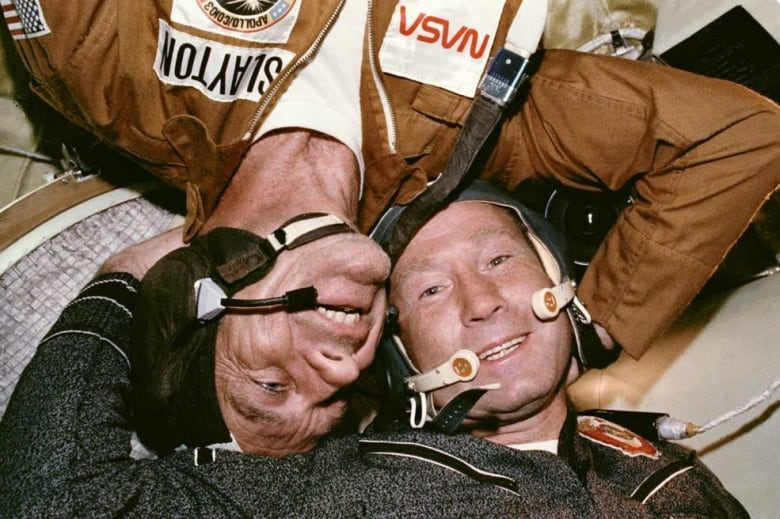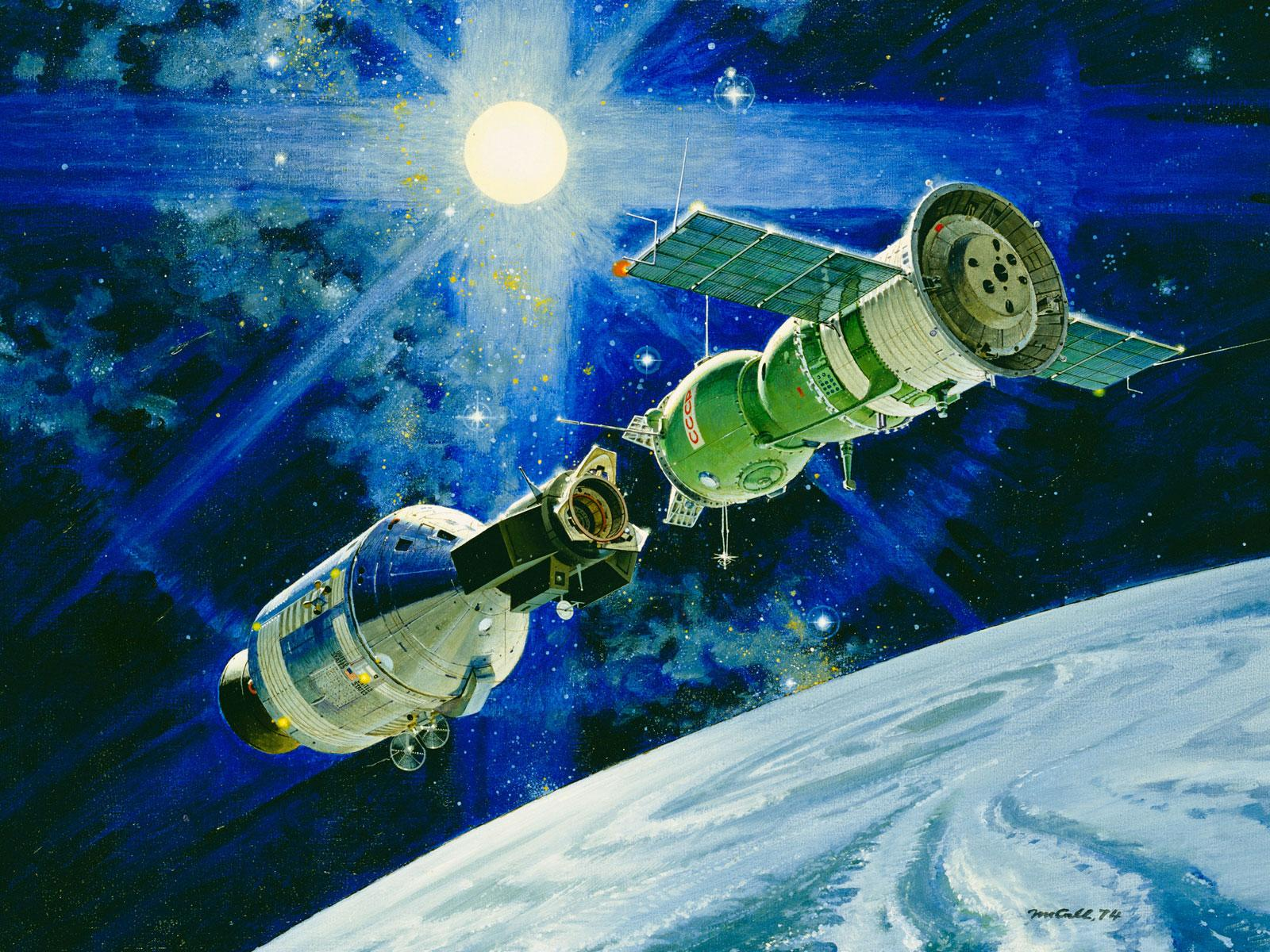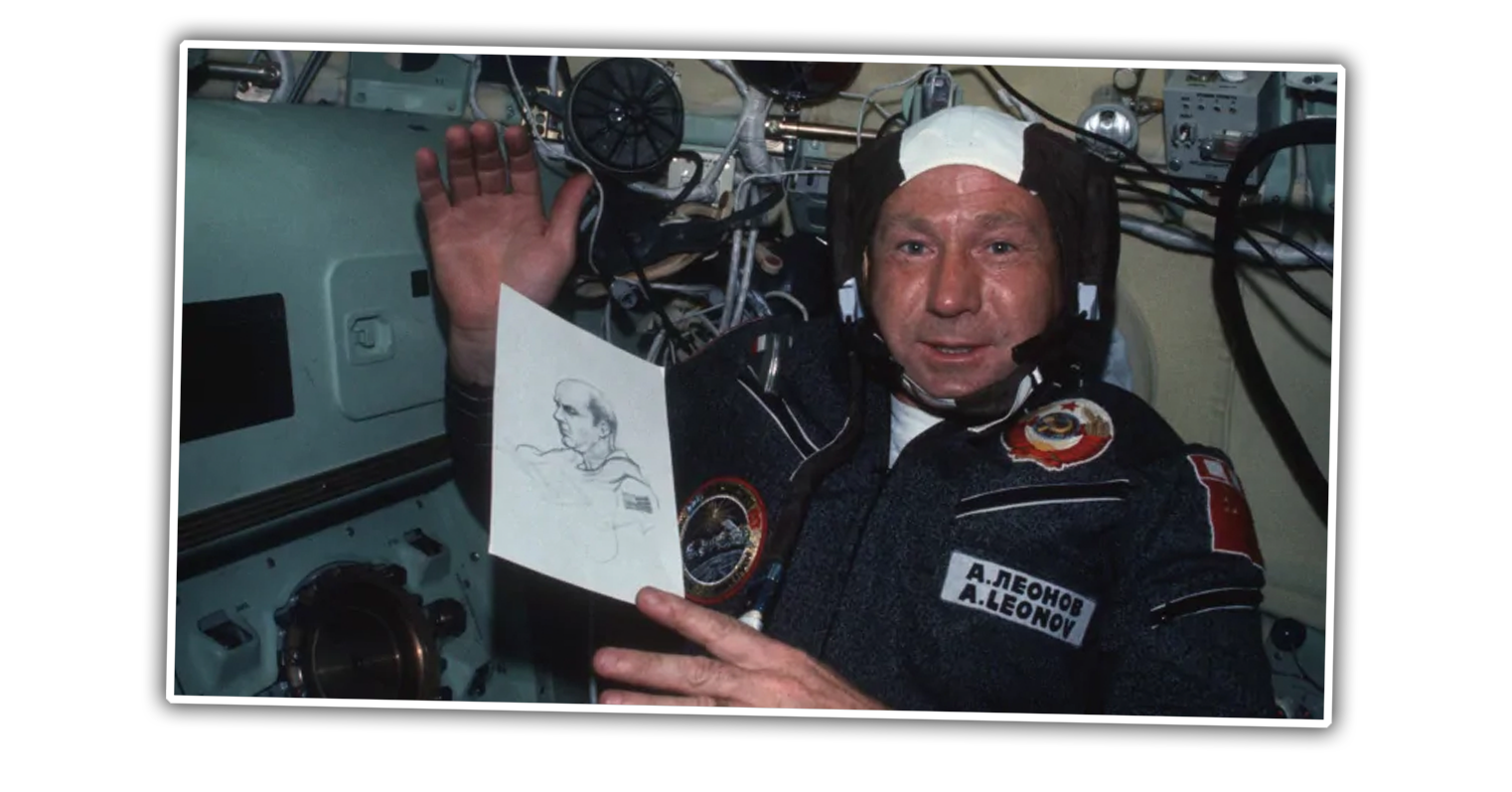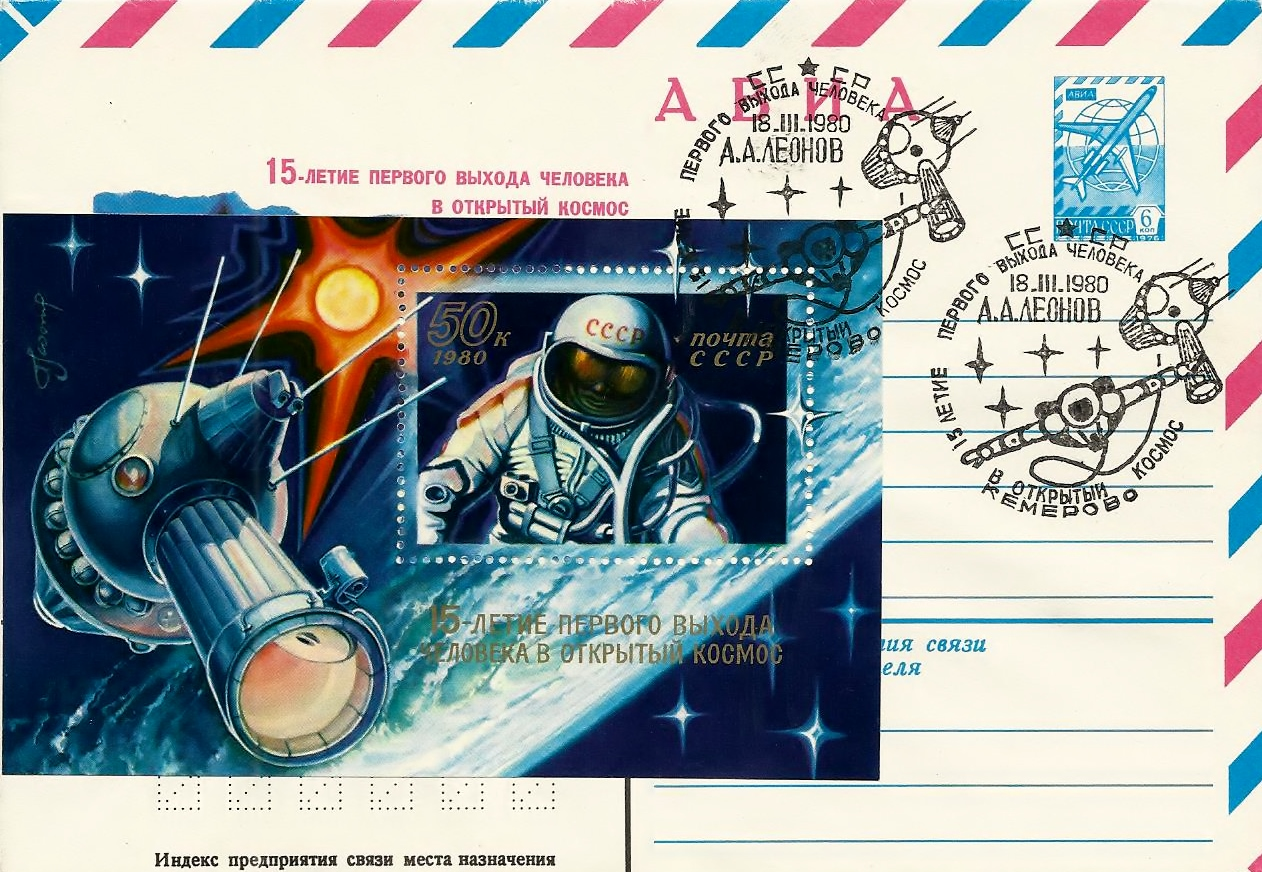Alexei Leonov, First Person To Walk In Space And Artist, Dead At 85
Like most people, I have some favorite cosmonauts. And, like many people, one of those favorite cosmonauts has always been Alexei Leonov, the first man to walk in space, a crew member on the first joint American-Soviet space mission, and, significantly, the first artist in space. Leonov died today, at the age of 85.
Born in Siberia in 1934 during the era of the Stalinist purges in the Soviet Union, Leonov's father was arrested and declared an "enemy of the people," though he was later able to return to his family.
Later in life, Leonov joined the Soviet Air Force, where he was selected along with 19 other pilots to be part of the first cosmonaut training group in 1960.

Leonov first gained worldwide attention for his mission on Voskhod 2. The Voskhod spacecraft were adaptations of the original Vostok spacecraft that took the first man in space, Yuri Gagarin, into orbit, but were modified in crucial ways, with one version allowing up to three cosmonauts to be carried, and another adding an inflatable airlock to permit egress from the spacecraft.
Voskhod 2 had such an airlock, and it was through this that Leonov made his first historic spacewalk. While the official footage of the spacewalk appears calm, even playful, the reality was far from that.
Leonov's suit proved to be incredibly difficult to move in because the pressure of the suit caused it to balloon, preventing him from being able to move his joints effectively, which made getting back into the inflatable airlock incredibly difficult, if not impossible.
After a lot of struggling, Leonov took the very risky step of bleeding off air in the suit, a dangerous gambit but one that allowed him to be able to move, at least. After getting into the inflatable, tube-like airlock, Leonov had to contort and perform some difficult acrobatics to be able to close the upper hatch before depressurizing the airlock and getting back into the safety of the spherical crew compartment.
The ordeal was so taxing and caused Leonov to sweat so much that it was reported he lost 12 pounds of body weight that day.
This event proved how well Leonov worked under extreme pressure and was a factor in his being chosen as the first Soviet to walk on the moon, a mission that, of course, never happened.

Later, Leonov was chosen to lead the Soviet crew in the historic Apollo-Soyuz mission of 1975, where an American Apollo spacecraft and a Soviet Soyuz spacecraft docked in Earth orbit, developing the androgynous docking adapter that (in a somewhat more developed form) is still in use today.
Leonov was also an accomplished painter and artist, sketching his fellow astronauts and cosmonauts in space, and producing a large number of space-themed paintings.

Many of these paintings became Soviet stamps, and are highly collectible today.

Astronauts have been paying their respects to Leonov, like Scott Kelly, who tweeted:
Cosmonaut #AlexeiLeonov passed away today in Moscow. He was not only the first person to walk in space, but also an accomplished artist. Most significant, however, he was a great human being. Fair winds and following seas my friend. #RIP pic.twitter.com/sOELAZMPte
— Scott Kelly (@StationCDRKelly) October 11, 2019
Second man on the moon and space icon Buzz Aldrin also issued a statement:
The Cosmonaut ambassador to the world. A great pleasure to be his friend. He tried for the moon but we made it. For space flyers friendships he helped formed the @ASE_Astronauts. Farewell and Godspeed Alexi. pic.twitter.com/AyfnJB2bIB
— Dr. Buzz Aldrin (@TheRealBuzz) October 11, 2019
Leonov was, in many ways, the ideal space explorer: tough but affable, a scientist and an artist, and warm and friendly in a way that made the differences between the Soviet Bloc and the West seem surmountable, even at the height of the Cold War.
Alexei Leonov was a true legend of human spaceflight, and he will be missed.
